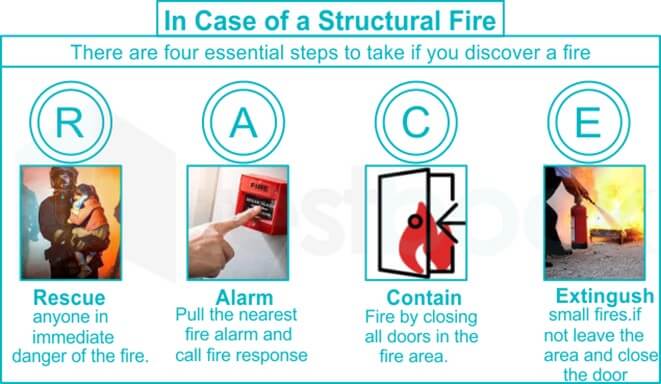A fire is found in a client's room during a routine medication pass. What is the nurse's first action?
Activate the fire alarm.
Contain the fire.
Notify the supervisor.
Remove the client from the room.
The Correct Answer is D
The nurse’s first action when a fire is discovered in a client’s room is to evacuate any clients or visitors in immediate danger12.
This is because the safety of the clients and visitors is the top priority.

Choice A is not the correct answer because activating the fire alarm is not the first action that should be taken.
Choice B is not the correct answer because confining the fire by closing all doors and windows is not the first action that should be taken.
Choice C is not the correct answer because notifying the supervisor is not the first action that should be taken.
Nursing Test Bank
Naxlex Comprehensive Predictor Exams
Related Questions
Correct Answer is C
Explanation
The priority responsibility of the nurse is to call for a Cambodian interpreter.
This ensures that the mother’s needs and concerns are accurately communicated and understood.
It also helps to prevent any misunderstandings or miscommunications that could occur if the daughter were to interpret.
Choice A is not an appropriate response because calling the chaplain for support may not address the language barrier.
Choice B is not an appropriate response because allowing unlicensed assistive personnel to interpret could result in inaccurate or incomplete information being conveyed.
Choice D is not an appropriate response because continuing to work with the daughter for interpretation could result in misunderstandings or miscommunications.
Correct Answer is C
Explanation
The nurse’s priority action when an eight-year-old child is eating a hotdog and begins coughing is to promote coughing.
Coughing is the body’s natural way of trying to clear an obstruction from the airway.

Choice A is not the correct answer because beginning the Heimlich maneuver quickly is not the first action that should be taken.
Choice B is not the correct answer because telling the child to put his hands by his neck to signify that he is choking is not the first action that should be taken.
Choice D is not the correct answer because leaving the child alone to find a phone is not the first action that should be taken.
Whether you are a student looking to ace your exams or a practicing nurse seeking to enhance your expertise , our nursing education contents will empower you with the confidence and competence to make a difference in the lives of patients and become a respected leader in the healthcare field.
Visit Naxlex, invest in your future and unlock endless possibilities with our unparalleled nursing education contents today
Report Wrong Answer on the Current Question
Do you disagree with the answer? If yes, what is your expected answer? Explain.
Kindly be descriptive with the issue you are facing.
